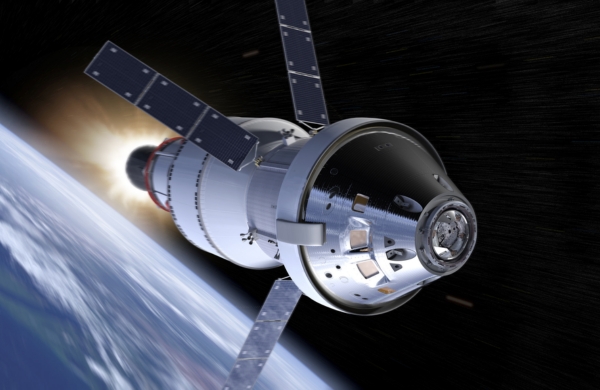
In an exciting step towards space exploration, NASA’s Artemis launch team has recently completed its inaugural simulation for the moon mission, Artemis II, at the NASA Launch Control Center in the Kennedy Space Center, Florida.
The leader of simulation training at the NASA Exploration Ground Systems (EGS), John Apfelbaum, expressed his enthusiasm, stating, “Each simulation is like a small science fiction story, but one that aids the launch team, NASA, and the entire nation in achieving greater success in our actual endeavors.”
Preparations are in full swing as NASA gears up to send a crew of four astronauts on a journey around the Moon. To ensure seamless execution, the teams are engaged in a wide range of simulations, making certain that the personnel supporting every aspect of the mission are fully prepared and focused, as they were for Artemis I.
Our @NASAGroundsys is gearing up for the next Underway Recovery test alongside @USNavy and @DeptofDefense. These crucial exercises will simulate crew extraction & capsule recovery for @NASAArtemis II splashdown. We’re one step closer to achieving safe & successful lunar missions! pic.twitter.com/ucz5h5Gq7s
— Bill Nelson (@SenBillNelson) July 25, 2023
The first simulation of Artemis II focused on two crucial stages of the launch countdown: the propellant loading and the terminal countdown.
The propellant loading involves the countdown process where teams fill the SLS (Space Launch System) rocket with cryogenic or super-chilled liquid gases. Once the loading operations are completed successfully, the teams proceed to the final and most dynamic part of the countdown.
Known as the terminal countdown, this phase represents the last 10 minutes leading up to the launch. During this time, all preparations for liftoff are finalized, and all systems of the rocket and the Orion spacecraft are brought online and readied for the momentous takeoff.
Also Read:NASA’s Solar Storm Warning: Preparing for Hyperactive Sunspots
NASA explains that the extended duration of nearly two days for the Artemis launch countdown necessitates these simulations to ensure flawless execution and coordination among the team members.
Charlie Blackwell-Thompson, the launch director for Artemis, emphasized the significance of these simulations, stating, “Simulations are truly pivotal to the launch team’s preparations. Some challenges presented by the simulation team are straightforward, while others are intricate, resulting in either a continuation of the launch countdown or requiring a troubleshooting decision.”
He further added, “The idea behind these simulations is to give the launch team an opportunity to practice, as a cohesive unit, all the various scenarios that may arise on the day of the launch.”
As NASA marches ahead with its ambitious plans to return humans to the Moon and pave the way for future space exploration, these simulations serve as a critical component of their mission’s success. By meticulously preparing for every possible scenario, NASA ensures that the Artemis II mission is equipped to overcome challenges and achieve new milestones in space exploration.
Also Read: Starlink’s Entry into India: A Battle for Satellite Internet Dominance
With the success of this first simulation, the Artemis team moves one step closer to making history and inspiring a new generation of space enthusiasts worldwide. The journey to the Moon and beyond continues, and with each simulation, NASA’s resolve to push the boundaries of human space exploration grows stronger.
The upcoming Artemis II mission promises to be another giant leap for humanity, and the world eagerly awaits the day when astronauts will once again set foot on the moon surface.

Leave a Reply